 Your new post is loading...
 Your new post is loading...
As journalists continue to critique their coverage of the presidential election, Nieman Reports is publishing an ongoing series of articles exploring the issues, challenges and opportunities—from newsroom diversity to fake news to community news outlets—that will inform reporting going forward. The full list of articles is below.
EIt seems pretty universal that 2016 was a crazy year – and the media industry was not left unscathed. From the widespread misinformation across the internet that may have influenced the U.S. election, the continued renaissance of podcasting and the advent of new virtual reality technologies, 2016 turned out to be a significant year in media, technology and journalism. Read on for our recap of the top media stories of the year and our predictions for what lies ahead....
All the discussion recently about the impact and reach of FAKE news is important, and I’m glad it’s being examined so deeply. Clearly that is part of the problem to be solved — but it’s only one part. I’m not letting REAL news off the hook. As someone who has deeply considered news nutrition, public engagement, and what makes our democracy function well (or not), here’s my diagnosis of what happened. The top 10 ingredients of a ‘Social Media Revolution Election’: Fragmented media consumption. People are consuming content on more screens in more forms than ever. Online, Text, Television, Video, Radio, On demand Audio/podcast, Social Media and via Search. Redundancy of mass media news content: dominated by the Eastern corridor-based perspectives (same people, same tone, same talking heads, same horse-race obsessions with various biases). Did you know that 6 companies drive what ~90% of Americans see from mass media sources? Commercial news as entertainment: pressures of the bottom line and disruption, translate to a focus on stories and coverage that drives clicks and views to generate higher advertising revenue. Lack of inclusion in the news: diverse races, gender, geographic locations, etc. are not seeing themselves in the news or are shown in highly stereotypical ways (which creates a distortion of reality). These audiences thus seek more relevant and relate-able alternatives, while the people who remain to consume mass media are not getting the full story. This leads decreasing knowledge and an overall lack of connection and empathy....
The 2016 election exposed a significant crisis for U.S. democracy: the failure of our news media system.
This was an election in which false news was consumed as if true; in which polls were significantly off-base; in which journalists missed the stories both of Trump supporters, who came out in unanticipated numbers, and former Obama voters, who defied predictions to stay home.
The easy response, in the wake of these multiple failures, is to focus on one specific weakness. If only journalists had interviewed more white people in the Rust Belt! If only pollsters had looked at a different data-set! If only Facebook were not so dominant, or fake news sites so plentiful…
Such essays in search of simple answers represent no more than collective wishful thinking. Systemic failures have systemic causes. Repairs to the system may not be enough. We need to put time and resources now into transforming our news media system.
Why did we not know that voters in the Rust Belt were willing to vote for an anti-regulation racist populist, even when doing so might go against their values and self-interests? Likewise, why did news organizations fail to anticipate what appears to be a lower turnout of black voters in North Carolina (with its new voter suppression laws)?
It’s not that journalists in those communities were not doing their job; it’s that there are very few journalists left to tell the stories of those communities....
If you thought you heard the last on fake news, you were sadly mistaken.
A Stanford study found that the majority of middle school students can’t tell the difference between real news and fake news. In fact, 82 percent couldn’t distinguish between a real news story on a website and a “sponsored content” post.
Of the 8,704 students studied (ranging in age from middle school to college level), four in ten high-school students believed that the region near Japan’s Fukushima nuclear plant was toxic after seeing an unsourced photo of deformed daisies coupled with a headline about the Japanese area. The photo, keep in mind, had no source or location attribution. Meanwhile, two out of every three middle-schoolers were fooled by an article on financial preparedness penned by a bank executive.
It seems that those surveyed in the study were judging validity of news on Twitter based on the amount of detail in the tweet and whether or not a large photo was attached, rather than focusing on the source of the tweet.
The WSJ, which first reported on the study, says that a big part of solving this problem among young people comes down to education, both at school and at home....
The last year has turned the United States into a country of information addicts who compulsively check the television, the smartphone and the good old-fashioned newspaper with a burning question: What fresh twist could our national election drama and its executive producer, Donald J. Trump, possibly have in store for us now?
No doubt about it: Campaign 2016 has been a smash hit.
And to the news media have gone the spoils. With Mr. Trump providing must-see TV theatrics, cable news has drawn record audiences. Newspapers have reached online readership highs that would have been unimaginable just a few years ago.
On Wednesday comes the reckoning.
The election news bubble that’s about to pop has blocked from plain view the expanding financial sinkhole at the center of the paper-and-ink branch of the news industry, which has recently seen a print advertising plunge that was “much more precipitous, to be honest with you, than anybody expected a year or so ago,” as The Wall Street Journal editor in chief Gerard Baker told me on Friday....
Try to imagine getting the latest news by chatbot? If you can think it, you can ask for breaking news from CNN using Amazon Echo. That’s right. It’s the latest news brought to you by CNN chatbot. CNN launches chatbot news CNN has done a great job of delivering the news on TV and new social media channels. In fact, it has a 40-person dedicated digital team ready to deliver chatbot news according to a Lost Remote post by Max Willens:...
Digital news continues to evolve, pushed by a variety of innovations in recent years, from groundbreaking new technologies like virtual reality and automated reporting to experiments on social platforms that have altered campaign coverage. As journalists and media practitioners gather for the annual Online News Association Conference, here are 10 key findings from recent Pew Research Center surveys and analyses that show how these rapid digital shifts are reshaping Americans’ news habits...
Some 23 per cent of news articles contain a social media embed, and 10 per cent of these embeds have either been modified or removed by their author since the article's publication, shows a report released today by SAM.
Social media curation platform SAM analysed one million web pages using its Report Card tool, focusing on North American news sites such as New York Daily News, Fox News, Vox, CNN or Forbes, to find out more about the role social media plays in newsgathering today.
The Report Card is available for free and enables publishers to find out how many social media embeds are currently on their websites and whether they have broken or they have been edited since publication....
In August, Washington Post Managing Editor Cameron Barr and his fellow senior editors decided to do something about a problem that had been niggling at them for some time:
Articles were becoming too long, often for no good reason.
"We were seeing too many pieces that were in the mid-range of their ambition and their success — coming in at 60, 70 inches of copy," Barr said. "We were seeing the same thing in a number of blogs, where pieces were just too long, and we felt as though editors were not applying the necessary discipline and rigor in how these pieces were being handled on the desk."
The solution? A newsroom-wide initiative to cut down on editorial flab, Barr said. Since the middle of August, he's asked Post's department heads to take responsibility for articles longer than 1,500 words online or 50 inches in print. Bylines, captions, headlines and subheadings don't count....
The 18-24 crowd has used the internet as its primary source for news for several years. Now it is specifying “social media” as its main source of news, with that niche overtaking television for the first time. The information comes from a study done by The Oxford University Reuters Institute for the Study of Journalism. It looked at consumers of news and information around the world for its “Reuters Institute Digital News Report 2016.” This is the fifth year it has issued such a report. It’s a fascinating read. 28 percent of 18-24 year-olds say social media is their main source of news, compared to 24 percent who cite television. Since 2013, the number of people in the US who say they get their news from social media has doubled—46 percent now use social media for news....
Four years ago, The Washington Post covered two major news events the old-fashioned way.
For the Olympics in London, sports reporters tallied up the medal counts on television and hand-wrote briefs for the website. And when the election came around a few months later, four Post scribes took a look at election returns and hand-wrote lots of little results stories — who won what, and where.
This year, that work is being done by robots. Kind of.
Earlier today, The Washington Post announced it's joining the growing number of news organizations who are using language-generation technology to produce stories automatically.
Heliograf, a tool developed by The Washington Post's engineering team, will use data and language templates to generate automatic briefs on medal tallies, event schedules and competition results for the 2016 Olympic Games in Rio. Those briefs will be fed into The Washington Post's main Olympics liveblog, which will also be home to stories written by the newspaper's sports reporters....
WBetween 1999 and May 2015, newspapers eliminated their paywalls 69 times, according to a study out this week by University of Southern California professor Mike Ananny and USC Ph.D. candidate Leila Bighash. (The authors say they came to this figure by finding public mentions of the decisions to drop paywalls, so they admit that their analysis could miss some of the times newspapers changed how they charge for online access.) The decision to drop a paywall can provide insight into how a news organization’s “values intersect with its commodification strategy, its technology design, and its brand identity” as outlets of all stripes are still deciding how much their reporting should cost: Whatever the motivations and mechanisms, when news organizations drop, suspend, or otherwise open up their paywalls, they change the commodification of online news. Content that was previously considered valuable enough to charge for becomes free because, for the different reasons described here, news organizations think it should circulate freely. The commercial press sometimes, briefly, looks similar to a public service broadcaster, providing access to all (albeit still with advertising). Of the 69 instances paywalls were dropped or eliminated, there were 41 times that news outlets dropped them only temporarily; the other 28 times, papers made the decision to permanently reduce or eliminate them. Ananny and Bighash were able to categorize these changes in paywall strategy into six different scenarios.Here are the reasons why publishers drop their paywalls, according to the study....
|
Each month, MediaShift posts a chart from Storyclash ranking publishers and news stories that get the most social media interactions. Storyclash regularly publishes rankings of Social Media Trends, covering online articles with the most social media interactions on Facebook and Google+.
The top story of the year according to analysis from Storyclash wasn’t the election. It was the moon. The November supermoon got publisher ScienceAlert 2.8 interactions and beat out stories about Hillary Clinton, Donald Trump and Queen. Below is the full list of the top social news in 2016 from Storyclash....
A new Pew Research Center survey finds that, for the most part, the large majority of Americans do not feel that information overload is a problem for them. Some 20% say they feel overloaded by information, a decline from the 27% figure from a decade ago, while 77% say they like having so much information at their fingertips. Two-thirds (67%) say that having more information at their disposals actually helps to simplify their lives. The survey shows that most Americans are comfortable with their abilities to cope with information flows in their day-to-day lives. Moreover, those who own more devices are also the ones who feel more on top of the data and media flows in their lives. Those who are more likely to feel information overload have less technology and are poorer, less well-educated and older....
More bad news about fake news: A new survey from Morning Consult finds more than 70% of Americans have heard about the “fake news” controversy, and nearly half (49%) say they have been exposed to fake news at least once a day through Facebook and Twitter.
In addition, 69% of those polled said they have started to read a news story only to realize later that it wasn’t real.
On the question of whether Facebook, Twitter, and Google should be able to censor fake news, a majority of Americans say they are comfortable with tech companies censoring fake news — 71% said it was appropriate for Google, Facebook and Twitter to remove fake news, and 67% said it was appropriate for Web service providers to remove it.
With regard to who is most responsible for policing fake news, Americans think they and social media sites are most responsible for policing fake news, but believe all actors must play a role. For example, 24% of Americans said "the person reading the news" is the most responsible for ensuring they are not exposed, followed by Facebook and Twitter at 17%. The government comes in third with 14% of the vote, followed by Web services providers at 10%, and search engines (such as Google) at 9%.
Since Election Day, President-elect Donald J. Trump has proposed a U-turn in American diplomatic relations with Cuba, boasted about negotiations with a major manufacturer, trumpeted false claims about millions of illegal votes and hinted that he might upend current free speech laws by banning flag burning.
All in 140 characters or less.
As news organizations grapple with covering a commander in chief unlike any other, Mr. Trump’s Twitter account — a bully pulpit, propaganda weapon and attention magnet all rolled into one — has quickly emerged as a fresh journalistic challenge and a source of lively debate.
How to cover a president’s pronouncements when they are both provocative and maddeningly vague? Does an early-morning tweet amount to a planned shift in American policy? Should news outlets, as some readers argue, ignore clearly untrue tweets, rather than amplify falsehoods further?...
Since Tuesday’s election, there’s been a lot of finger pointing, and many of those fingers are pointing at Facebook, arguing that their newsfeed algorithms played a major role in spreading misinformation and magnifying polarization. Some of the articles are thoughtful in their criticism, others thoughtful in their defense of Facebook, while others are full of the very misinformation and polarization that they hope will get them to the top of everyone’s newsfeed. But all of them seem to me to make a fundamental error in how they are thinking about media in the age of algorithms. Consider Jessica Lessin’s argument in The Information: "I am deeply, deeply worried about the calls I am hearing, from journalists and friends, for Facebook to intervene and accept responsibility for ensuring citizens are well-informed and getting a balanced perspective…. Facebook promoting trustworthiness sounds great. Who isn’t in favor of accepting responsibility and ferreting out misinformation? But major moves on Facebook’s part to mediate good information from bad information would put the company in the impossible position of having to determine “truth,” which seems far more objective than it really is. Moreover, it would be bad for society.” My response: Facebook crossed this river long ago. Once they got into the business of curating the newsfeed rather than simply treating it as a timeline, they put themselves in the position of mediating what people are going to see. They became a gatekeeper and a guide. This is not an impossible position. It’s their job. So they’d better make a priority of being good at it....
At the recent Dell-EMC World event, Dell’s global communications director said that a growing number of people who used to identify themselves as journalists or analysts are identifying themselves as “social influencers.” She said that this digital transformation was happening before our eyes, right in the press room. Of the 300 press representatives attending the event, nearly 60 also identified themselves as social influencers.
I wondered about this. There has been a steep decline in journalism jobs, and presumably a rise in “social influence” jobs (although I have not seen any real statistics on this). Are social influencers taking on the role of journalists, or replacing this function in some way? And on the flip side, why would journalists need to become “influencers?”...
Pew Research tracks all kinds of media data but two recent facts stand out:
Only 18% of the public have “A lot” of trust in the information provided by “national news organizations.”
Understandably, only 4% of the public have “A lot” of trust in the information provided by social media.
Media credibility will continue to drop like a hot potato from the top of Trump Tower....
Election night is the time when everyone has CNN on. We’re the place to go for TV and digital, and we also want to be the place to go on social. We’re working on that, and we have a lot of fun things planned for election night.
We’re going to be very conscious of reaching our audiences across Facebook, Snapchat and Twitter. But we’re also going to live up to the CNN standard. We will work together as a multi-platform media company to make the calls at the right time.
We saw this play out in the primaries, where we made the calls across TV, digital and social at the exact same time. So we work together as a unit to make sure as a network, we make that call in unison. The same will happen on election night. All of social and digital and TV will be working to make sure there’s a crescendo of results as they happen....
Legacy news organizations have been trying for more than a decade to crack the code of what to publish digitally, where and when. Now they are fielding a different kind of urgent request from readers — can you "unpublish" that? The cause is obvious — people routinely get Googled by potential employers, dating partners or the just plain curious. That 20-year-old drunk and disorderly arrest has a way of popping to the top of the list. A remedy is less clear. Most newspapers have had a longstanding practice of removing published stories only under extraordinary circumstances. But does that still make sense in the digital era as the potential rises for damaging people's reputations with long ago or out-of-context accounts of their misdeeds?...
Barely two days after changes to its Trending Topics section, a fake article about Fox News anchor Megyn Kelly began trending on Facebook — before entirely disappearing on Monday morning. The incident came on the heels of Facebook’s announcement on Friday that human curators will no longer write the short descriptions that accompany trending topics on the site. Its trending news team was then shown the door. The Trending Topics section has been shrouded in controversy since May, when a Gizmodo report alleged an inherent bias in its prioritization of news articles, which also triggered a Congressional investigation as well as an internal Facebook investigation. The changes, clearly, are not devoid of problems. For our latest Digiday Confessions, we talked to a member of the now-defunct trending news team at Facebook, who reflected on the recent developments as well as time spent working on the team. Digiday has also reached out to Facebook for comment but has not yet received a response....
The New York Times has embarked on a new form of storytelling to enhance its coverage of the Summer Olympics: Two-way text-messaging.
For two weeks, deputy sports editor Sam Manchester will be sending text messages from the Olympic Games in Rio to readers who sign up for the service.
Unlike email alerts or push notifications, these texts will give readers an informal, behind-the-scenes look at the Games, almost as if they had a friend texting them directly. Readers can also write back to Manchester. And while he won't be able to reply to each message, the responses can be used to personalize each reader's experience.
The innovation is an effort to reach readers on the platforms that are central to their lives, Andrew Phelps, the Times' Director of Personalization, told CNNMoney....
During the 2012 election, the Washington Post’s political editor Rebecca Sinderbrand sent out only a handful of tweets each day. This year, however, the paper has an entire social media team, sending out about five tweets per hour, not including a separate account dedicated solely to politics. "We can’t do our jobs without having access — in particular to Twitter — but other platforms as well,” she said. “That really started to happen in 2012.” At the Republican National Convention, the Post’s social media team used Twitter, as well as Snapchat, Facebook and Facebook Live.This cycle is all about storytelling on multiple platforms and connecting those platforms. Take, for instance, a Facebook Live video Sinderbrand did with Robert Costa, the national political reporter with the Washington Post. The video appeared on Facebook, but was also tweeted along with tags to their respective Facebook pages....
|
 Your new post is loading...
Your new post is loading...
 Your new post is loading...
Your new post is loading...








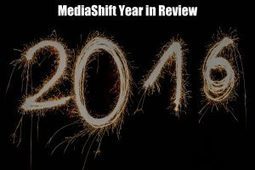

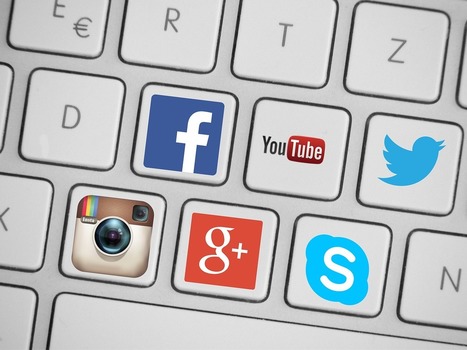



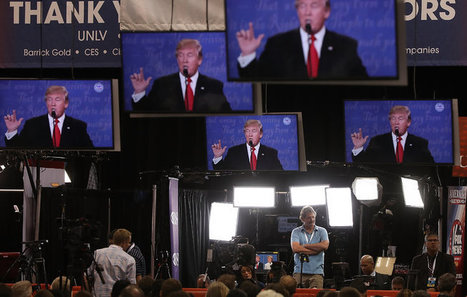
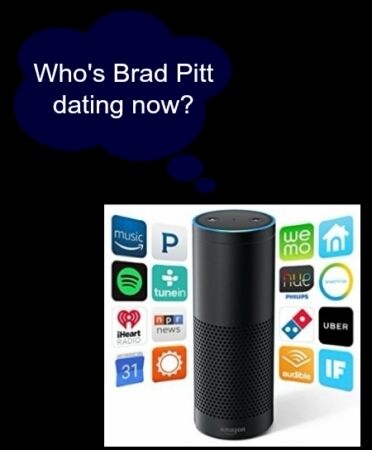


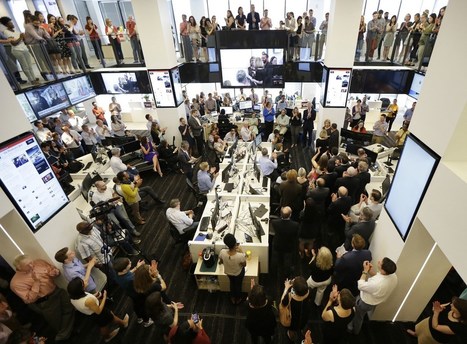
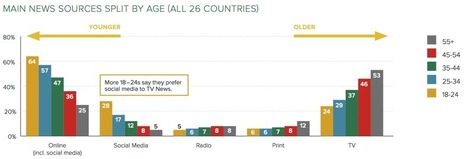
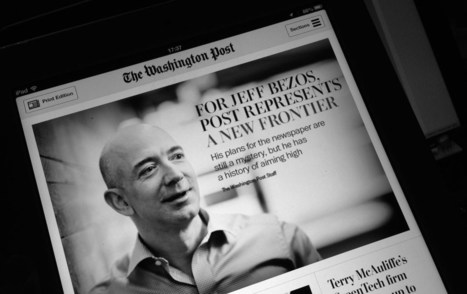


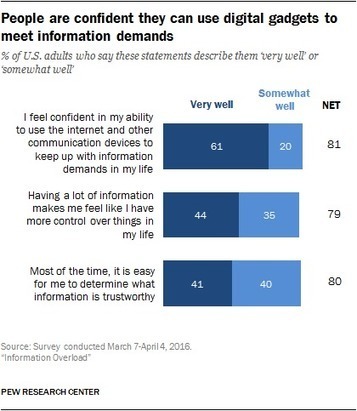

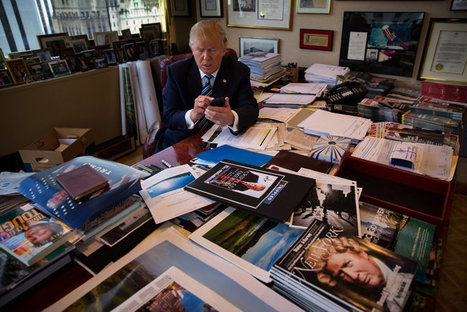

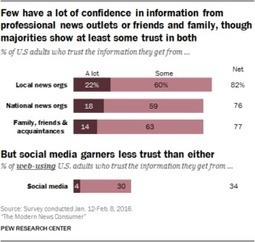
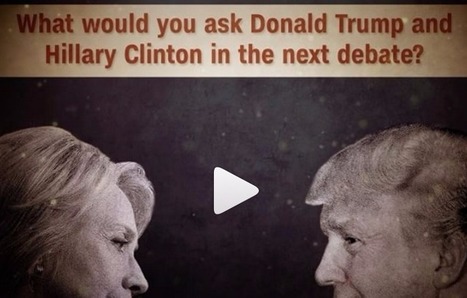









Covering thought leadership in journalism: Election '16: Lessons for Journalism is recommended reading if you follow journalism and social media.